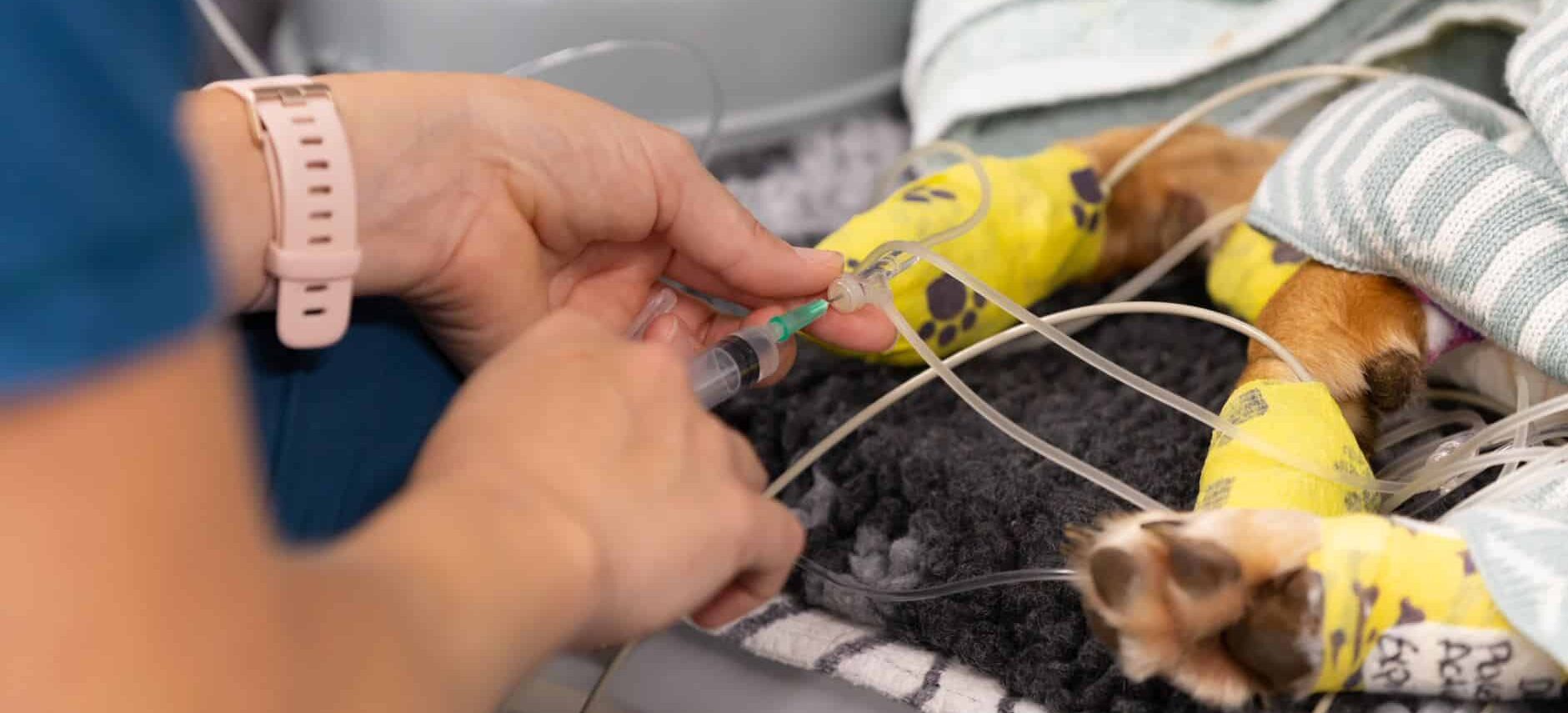In our previous article on tick paralysis, we discussed the importance of recognising subtle clinical signs, grading patients based on severity, and approaching with a thorough diagnostic plan. Now that you can be confident you’re dealing with a tick case, it’s time to commence vital and life-saving treatment with our primary focus centered around one crucial ingredient: TAS.
Tick anti-serum (TAS), consists of a hyperimmune serum containing antibodies capable of inactivating unbound holocyclotoxin and allowing removal by the immune system. Derived from canine serum, TAS has been used for years in both canine and feline patients, and while essential in the treatment of tick paralysis, carries risks of adverse reactions and anaphylaxis in some patients.

But recent developments have allowed for the production of a highly purified anti-serum to provide safer administration to feline patients. The canine tick anti-serum is fractionated, removing most canine serum albumin and other non-immunoglobulin proteins to reduce the likelihood of adverse reactions when administered to a feline patient.
While treatment guidelines for recommended doses still remain unclear, our team at AEA recommend the doses below:
Tick Anti-Serum Dose
Canine: 10mls max of anti-serum up to 10kg, or 1 ml/kg when over 10kg, whichever is higher for canine patients. It is not unreasonable to administer a maximum of 20ml to patients over 10kg in body weight.
Feline: The recommendation for cats is 10mls of anti-serum.
Extra anti-serum may be considered if a patient has significantly deteriorated, an additional tick is found, and more than 48 hours has passed since administration of the original dose.
Tick Anti-Serum Administration
The anti-serum is always given intravenously, as this offers the most rapid and reliable distribution throughout the body. TAS is virtually a preserved form of plasma, and most patients tolerate it extremely well, but administration can still lead to potential reactions in both dogs and cats. As mentioned above, a purified anti-serum product was made available earlier in 2022 and offers a safer alternative for cats to minimise the risk of adverse reactions.
By diluting the serum with saline, and infusing it over a significant period of time, the incidence of reactions can be markedly reduced. At AEA, we recommend the following administration guidelines:
Tick Anti-Serum (Dilute 1:1 with saline)
| Canine | 10ml minimum, or 1mg/kg (whichever is greatest) | Slow IV (1 hour) |
| Feline | 10ml maximum | Slow IV (1 hour) |
NB: routine use of premedication with a corticosteroid is not recommended.
Very close monitoring, in combination with slow IV administration, is required in all cats, particularly those previously treated for tick paralysis. Where a 2nd TAS administration is required in cats, the patient must be monitored carefully throughout the entire transfusion.
Tick Anti-Serum Adverse Events
Always monitor closely and be prepared for a potential TAS reaction, especially in cats as they have a higher incidence of anaphylaxis. The risk of anaphylaxis can be reduced by administering a purified tick anti-serum product, but all patients must still be monitored closely. Adrenaline should be drawn up and ready to be given IV in the event of an anaphylactic event at the following dose:
- Adrenaline 0.01mg/kg IV (never administer SC)
- 0.5ml of a 1:10000 adrenaline solution given IV
Hypersensitivity Reactions
Hypersensitivity reactions are the most common reaction observed in dogs, which is thought to be as a result of the Bezold-Jarisch (BJ) reflex, causing severe reduction in cardiac filling. This reaction can be determined through the following clinical signs:
- Bradycardia
- Pale mucous membranes
- Hypotension
Treatment of this condition includes:
- IV fluids (isotonic crystalloids) administered at 10-15ml/kg (dog), and 5-10ml/kg (cat)
- Flow by oxygen therapy
- Atropine 0.02-0.05mg/kg IM/IV
Dermatological manifestations of hypersensitivity (hives, angioedema) should increase the suspicion for anaphylaxis. This can be treated by stopping the infusion of TAS and giving Chlorpheniramine 0.5mg/kg IM. The TAS likely needs to be diluted further and given over a longer time, but the patient should be monitored closely for any signs of developing systemic anaphylaxis.

Systemic Anaphylaxis
Systemic anaphylactic reactions may be seen in either species, but are more common in cats than dogs. Clinical signs can include:
Systemic Anaphylaxis in Cats:
- Tachycardia/bradycardia
- Dyspnoea
- Vomiting
- Hypotension
Systemic Anaphylaxis in Dogs:
- Tachycardia
- Pale mucous membranes
- Poor pulse quality
- Vomiting/diarrhoea
Treatment of systemic anaphylaxis includes:
- Immediate suspension of TAS administration
- Flow by oxygen therapy
- Adrenaline 0.01mg/kg IV (1ml/10kg IV of a 1:10000 solution)
- Crystalloid boluses given rapidly IV at 20ml/kg for dogs and 10ml/kg for cats (titrate based on heart rate and BP)
- Monitoring of blood pressure, heart rate, capillary refill time, pulse oximetry
- CRI of adrenaline (0.05ug/kg/min and titrated to effect) is recommended with ongoing fluid support
The anti-serum has now been given and the unbound toxin is beginning to inactivate – an important step in successful management of your patient! But this is just the beginning of treatment.
There’s much more to consider before your tick patient will be leaving the hospital safely – administering TAS is really just one step in your treatment plan. Find out about vital next steps in treatment and how to safely manage respiratory disease in our next tick paralysis guide.
Want to find out more about TAS, discover the latest treatment guidelines, and download a detailed tick paralysis protocol? Sign up to VetAPedia for free access to these and 100+ clinical emergency resources.




